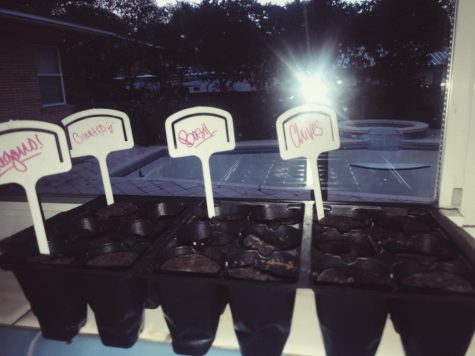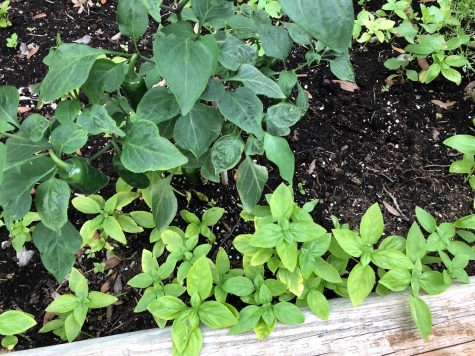How to Grow Your Own Herbs
April 13, 2018
Photo Credit: Kayla Eckermann (used with permission)
If grown for more than six months indoors; herbs can be transferred to a larger outdoor area to allow for heightened growth.
The convenience of growing herbs at home saves money, time, and gives anyone who likes to cook the satisfaction of making food with their organically homegrown fresh herbs. Growing an herb garden at home, indoor or outdoor, does not take a lot of maintenance, making it a fun and useful hobby for those who love to spend time in the kitchen.
Common herbs to grow at home that are the most versatile in meals are; sage, basil, oregano, thyme, rosemary, parsley, chives, and cilantro. Depending on the herb, either get a four inch root bud or a half inch clipping from the plant to prepare for placement. After choosing your preferred herbs follow these steps for successful herb growth.
Find a good spot:
A location with a lot of natural light near a window allows herbs to receive their 6 needed hours of sun daily.
Pick a container or pot:
Herbs are versatile plants; you can pick a jar, cup, bowl, or pot to host the herbs as long as it has good drainage so the soil will not drown heavily with water, killing the herbs.
Planting:
Get local soil from your backyard and place it into your desired pot without compacting the dirt too much to help regulate the water flow out of the pot (sand can be added to break up the thickness of the dirt). Once the dirt is situated and relatively loose, create a crater double the size of the root you are planting, and after placed, cover the root or clipping under an inch of soil.

Clearly label newly bedded herbs to individually regulate if the herb is growing at a rate consistent to its normal recorded pace.
Care:
Water the herbs until the water line reaches one inch in the specific container so the roots are able to slowly absorb the water. Depending on the container, constantly check the soil using a finger to avoid drying out the herb roots. If the soil is not retaining humidity; cover the container top in with clear plastic to keep the soil moist.
Temperature
Keep the indoor temperature between 65 and 70 degrees fahrenheit to prevent the herbs from wilting or freezing.
Fertilization
You can optionally fertilize the herbs with basic plant food such as Miracle-Gro Indoor Plant Food every week to ensure healthy and consistent growth.

Even without a green thumb; growing herbs is an easy way to fill up free time, save money, and eat every meal with flavors freshly cut from one’s own kitchen.

